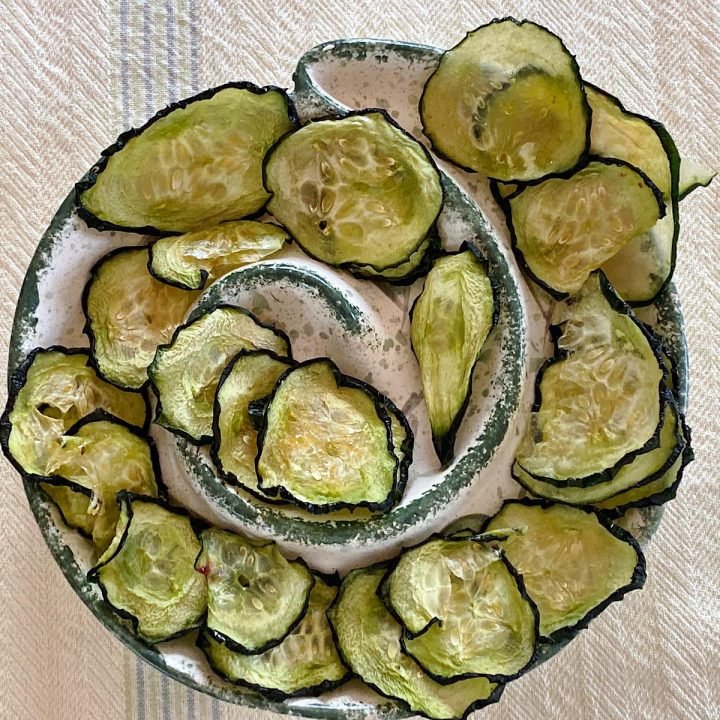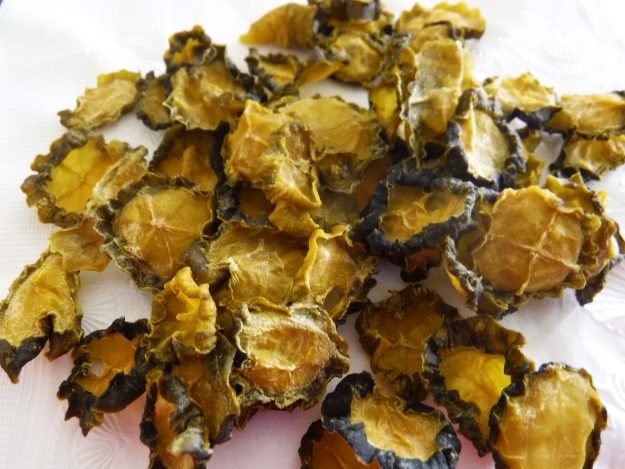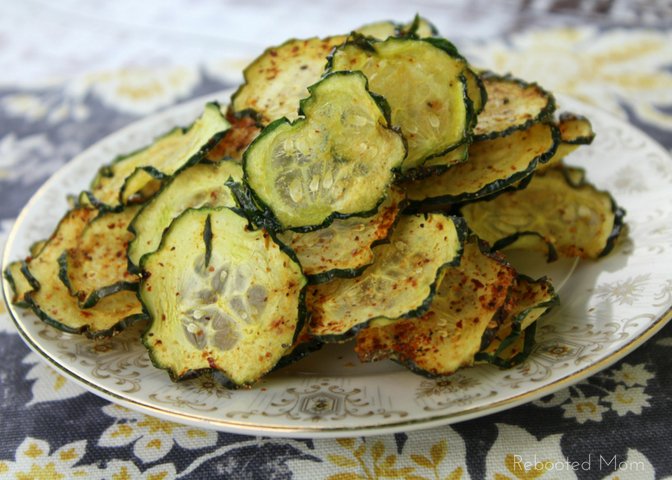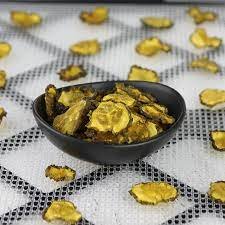Dehydrated pickles are one of the best ways to preserve them. They can be preserved for up to six months and add a wonderful crunch to any dish.
You can make dehydrated pickles in a variety of ways. To get crunchy, dehydrated pickles that are crispy and crisp, use a food dryer to dry them at 135F for 18 hours. Or bake them in the oven for 6 hours at 135F.
Let’s look at some ways to make pickles from dried fruits and how you can enjoy them best!
What types of pickles can you dehydrate?
Pickles come in many varieties, but the most common ones are sweet, sour and dill.
Sour pickles contain salt brine. Dill pickles are fermented with vinegar and dill brine. Sweet pickles are typically packed with sugar brine and vinegar brine.
You can find out which pickles are best for drying here. After drying, however, the final texture of pickles can vary.
Dill and sour pickles will turn dry and simple to break similar to other dehydrated foods. Sweet pickles come in a sugar brine so they can feel tacky and gummy.
If you care about the texture, make sure to purchase sour or dried dill pickles to dehydrate.
How to Dehydrate Pickles with a Food Dehydrator
The best and most stress-free method to make pickles is to use a food dehydrator. Let’s look at how to make pickles with a food dryer!
Ingredients
- Pickles (dill pickle, sour or sweet)
- Food dehydrator
Instructions
- Pickles are often packed with brine so rinsing them to get rid of any brine will help remove all the unpleasant flavors.
- Food dehydrators can emit unpleasant odors throughout the home. It is best to rinse the vinegar and salt solution off the kitchen floor.
- Depending on your preference, cut the pickles into thin slices.
- Dehydrated slices will make thinner slices and will crisp up faster.
- Keep in mind that slices shrink when water is removed. If you cut them too small they may be difficult to eat.
- To prevent pickles sticking to the tray, line the tray with parchment paper. Spread the pickles on the tray and make sure you separate them.
- For sour or dill pickles, dry them for up to 8 hours. For sweet pickles, dry it for up to 18 hours.
- To ensure that they have the right texture, make sure you check them every few hours. Dill and sour pickles will become harder and easier to break. Sweet pickles should be firm, but chewier and more difficult to break.
- Once the chips are at the desired texture, remove the tray from the oven and allow them to cool before conditioning.
How to Dehydrate Pickles with a Food Dehydrator
The best and most stress-free method to make pickles is to use a food dehydrator. Let’s look at how to make pickles with a food dryer!
Ingredients
- Pickles (dill pickles, sour or sweet)
- Food dehydrator
Instructions
- Pickles are often packed with brine so rinsing them to get rid of any brine will help remove all the unpleasant flavors.
* Food dehydrators can emit unpleasant odors throughout the home. It is best to rinse the vinegar and salt solution off the kitchen floor. - Depending on your preference, cut the pickles into thin slices.
Dehydrated slices will crispen up more quickly and become thinner slices.
* Slices will shrink when water is removed. Don’t cut too small or they will be awkward to eat. - To prevent pickles sticking to the tray, line the dehydrator tray using parchment paper. Spread the pickles on the tray and make sure you separate them.
- For sour or dill pickles, dry them for up to 8 hours. For sweet pickles, dry it for up to 18 hours.
* Check them every few hours to ensure they have the right texture. Dill and sour pickles will become harder and easier to break. Sweet pickles should be firm, but chewier and more difficult to break. - Once the chips are at the desired texture, remove the tray from the oven and allow them to cool before conditioning.
How to Dehydrate Pickles in the Oven
Pickles can be dehydrated without a food processor, but you can bake them in the oven for the same effect.
Ingredients
- Pickles (sour, dill, or sweet).
- Baking tray
- Parchment paper
Instructions
- Preheat your oven to 135°F
- Rinse the pickles and cut them in a similar fashion to those shown above.
- Spread the slices on a parchment-lined baking tray. Make sure they don’t overlap so that the slices can dry individually.
- Bake pickles in the oven 4-8 hours for sour or dill pickles and up to 18 for sweet pickles
- To ensure that the pickles are dry evenly, rotate the tray every few hours.
- After a while, check on the pickles to ensure that they are still in good shape before you remove them from the oven. Allow them to cool before conditioning.
How to Dehydrate Pickles in the Oven
Pickles can be dehydrated without a food processor, but you can bake them in the oven for the same effect.
Ingredients
- Pickles (sour, dill, or sweet).
- Baking tray
- Parchment paper
Instructions
- Preheat your oven to 135°F
- Rinse the pickles and cut them in a similar fashion to the ones above.
- Spread the slices on a parchment-lined baking tray. Make sure they don’t overlap so that the slices can dry individually.
- Bake pickles in the oven 4-8 hours for sour or dill pickles and up to 18 for sweet pickles
- To ensure that the pickles are dry evenly, rotate the tray every few hours.
- After a while, check on the pickles to ensure that they are still in good shape before you remove them from the oven. Allow them to cool before conditioning.
How to condition dehydrated pickles
When making dehydrated food, conditioning is an important step to make sure that all pieces are the same moisture level.
You can store them longer without worrying about molds or moisture condensation.
How to condition pickles dehydrated:
- Place the dehydrated, cooled pieces in an airtight container
- You need to make sure that the container is only half full. This will allow the pieces to move freely. If you need more storage, you can use multiple containers.
- Seal the container and place it in a cool, dry area in your kitchen for upto a week. To equalize the moisture levels, shake the container daily.
- Check the container for signs of condensation after the first day.
- Condensation indicates that the pickles are still moist. If you see water droplets you need to continue drying or baking the pickles until the moisture is gone completely.
- You can leave the condensation alone, but it won’t be allowed to escape the pickles. This will make it a breeding ground and cause mold growth.
- Pickles with white spots will not be eaten if there is mold.
- The pickles can be enjoyed immediately or stored for a long time after being dehydrated.
How to Store Dehydrated Pickles
Pickles that have been dehydrated can be kept at room temperature. Pickles can be stored at room temperature in an airtight container. They will last up to one year without the need for any preservatives.
You can place small packets of silica jelly inside the container. The silica gel will absorb any moisture in the air and ensure that your chips last longer without turning moldy.
You will need to seal the bag with a vacuum to protect your pickle chips. The pickles will stay fresh and crisp while traveling by removing all air from the container.
How to Make Pickle Powder
Pickle powder makes a delicious sweet-and-sour snack, such as popcorn, hummus, or deviled eggs.
You can make your pickle powder from dehydrated pickles you’ve made at home by using a food processor or high-speed blender to grind the chips.
Similar to pickle powder, store pickle powder in an open container in a cool and dry place until you are ready to use it.
Is it possible to rehydrate dry pickles?
Is there a way to rehydrate pickles after they have been dehydrated?
Pickles made from dehydrated cans are magical because you can rehydrate them to bring back their freshness and gummy texture.
Pickles are usually sold in a salt- or vinegar-based brine. To restore their texture and delicious taste, you’ll need to rehydrate them in the same brining solution.
Rehydrating pickles with only water will result in a gummy texture, but a bland taste.
You will need the following to make brine for drying pickles:
How to rehydrate dried pickles.
- Combine all ingredients, except for the pickling spice or dill seeds, in a saucepan. Bring to boil.
- Stir frequently to melt the salt and sugar. Mix well and remove from heat.
- The brine should be poured into a jar. Next, add the pickling spice and the dill seed. Allow the solution to cool completely.
- Allow the pickle chips to soak in the brine solution for two days.
- Pickles will taste great after 2 days.
How to tell if your pickles are bad
Dehydrated pickles last longer than regular pickles but can still become spoiled if they aren’t properly conditioned or left out too long.
These are the clear indications that your pickles are no longer fresh.
Condensation on the container indicates that pickles are still moist.
You can bake the chips or dehydrate them for an additional hour if they are still damp after drying.
If they are left for too long, however, moisture can lead to food poisoning.
The chips’ surface may have mold spots. You should not use dehydrated pickle chips if they have turned moldy.
If the chips’ color or texture changes, it is a sign they are bad. They are unsafe to eat if they become too soft or breakable.
The most obvious sign that pickles are dehydrated is a pungent, strong, or sour odor. Pickles can be characterized by a strong smell, so it is possible to misinterpret.
If the chips smell rancid then they should be avoided!



